An Integrated Science of the Absolute: Based on Darsana-Mala (Garland of Visions) of Narayana Guru
It is not just the magnum opus, but a truly monumental effort of a scientist-philosopher who has spent a whole lifetime to formulate a unitive science, wherein all disciplines of human questing could find a common ground a science where modern science and ancient spiritual wisdom could meet and merge like two opposite poles of a magnet. As a direct disciple of one of the great rishis of the modern age, Nataraja Guru discovers this common ground in Brahma-vidya?, which he calls the Integrated Science of the Absolute, and which has, at its base, his Gurus Dars?ana Ma?la?. A string of hundred Sanskrit verses, composed by the mystic-poet, Narayana Guru (18541928), the Dars?ana Ma?la? is the very epitome of all visions of truth inspired by his remarkable acquisitions of Upanis?adic thought and, yet far more, by his own tapas (mystical discipline). Reproducing these highly significative verses in Roman script, along with English translations, word meanings, and extensive commentaries, Nataraja Guru not only spells out his mentors Visions of the Absolute in contemporary idiom, but also shows how these visions are fully validated by modern science. Eclectic synthesis of varied scientific disciplines into a systematic whole is not all that Nataraja Guru accomplishes here. Rather, his book (now in third edition) is an attempt to reintroduce Brahma-vidya? as the one Master Science that embraces every branch of science, every human interest. CONTENTS Volume-1 Foreword vii Foreword to the Third Edition xv Preface xix VOLUME ONE PRELIMINARIES 1. The Notion of the Absolute 2 2. United Science Knows No Frontier 3 3. The Structural Unity of Thought 4 4. Laboratory Knowledge vs Seminary Wisdom 6 5. Concepts and Percepts at Loggerheads 11 6. The Axiomatic Origin of Possible Truth 13 7. The `Subject-Matter’ and `Object-Matter’ of This Work 16 8. The Status, Content and Scope of the Absolute 18 9. The Term `Absolute’ Widely Used by Scientists 19 10. Dialectical Implications of the Content of the 23 Absolute 11. The Dialectical Approach to the Notion of the 25 Absolute 12. Dialectical Methodology 30 13. Certitude Resides at the Core of Consciousness 38 14. Further Light on the Scope and Limitations 40 of This Science xxiv An Integrated Science of the Absolute 15. Contributions of Vedànta Epistemology 41 16. The Scientific Certitude Claimed in This Work 43 17. Normalization and Neutralization of Scientific 48 Thinking 18. The Gap between Experimental and A Priori 52 Thinking 19. Experience and Experiment Have to 55 Interpenetrate to Reveal the Absolute 20. Would Not This Twofold Effort Make Us 61 Relive the Absolute? 21. Possibilities and Probabilities Meet in the 66 Matrix of RelationÝRelata 22. The Dialectical and Structural Relationship 73 between Man and Machine 23. Semantic Polyvalence of the Word and Its 79 Meaning 24. Steps from Logic to Dialectic 85 25. Mathematics Reveals the Possibilities of a Science 90 of the Absolute (i) The Mathematical Frame of Reference 90 (ii) The Delights and Puzzles of Mathematics 95 (iii) Mathematics Falls Short of the Absolute 101 26. The Possibility of Structural Analysis Inside 105 the World of Discourse 27. Bergson`s Own Structural Prognostics 108 28. A Structural Model with Absolute Status 115 Already in Use 29. Great Possibilities of Inter-Disciplinary 121 Structuralism 30. The Plan of This Work 128 1. COSMOLOGY Prologue 145 1. Inner and Outer Compatibilities 149 2. The Common Parameter Passing through 153 Cosmogony and Cosmology 3. Merits of Mathematical Language 159 4. The Prologue and Epilogue of Each Chapter 162 Distinguished Translation and Commentary Dar÷ana-Màlà: Chapter 1 166 Adhyàropa-Dar÷anam (Vision by Supposition) Epilogue 177 1. Speculation vs Observation 182 2. Some Interesting Modern Views in Cosmogony 184 3. Cosmogony in »gveda 186 4. Cosmogony in the Bible 187 5. The Interchangeability and Homogeneity of 188 Dialectical Counterparts 6. Evolutionary Cosmological Processes 192 7. Evolution in Terms of Consciousness 195 8. The Place of Evolution in a Normalized Context 203 9. Concluding Remarks 208 2. METHODOLOGY Prologue 215 1. Methodology and Structuralism 216 2. Further Implications of Cartesianism 219 3. Directing Human Understanding 222 4. The Status of the Horizontal Reference 225 5. A New Way in Physics 226 6. Relative and Absolute Time 231 Contents xxv xxvi An Integrated Science of the Absolute 7. Bergson`s Five Objections to Relativity 236 8. Bergson`s Objections Examined 238 9. Bergson`s First Objection 241 10. Bergson`s Second Objection 248 11. Bergson`s Third Objection 252 12. Bergson`s Fourth Objection 258 13. The Plurality of Times 259 14. Bergson`s Fifth Objection 273 15. The Figures of Light 275 16. The SpaceÝTime of Four Dimensions 282 17. The Time of the Restricted Theory of Relativity 299 and the Space of the General Theory of Relativity 18. Axiomatic Physics 302 Translation and Commentary Dar÷ana-Màlà: Chapter 2 309 Apavàda-Dar÷anam (Vision of Non-Supposition) Epilogue 316 1. New Methodological Perspectives 318 2. Demi-Relativity, Completer Correlations, 320 Fuller Reciprocity, TimeÝSpace Continuum, and Their Unity 3. The Epistemological and Methodological 321 Context of this Chapter 4. A New Mathematical Language 324 5. Structure More Compactly Conceived 329 6. Ascending and Descending Movement in 331 Reasoning 7. The Transition from the Relative to the Absolute 333 8. The Analytical Approach 336 9. Concluding Remarks 339 3. PHENOMENOLOGY Prologue 345 1. Conversant about the Mind 348 2. Two Sets of Antitheses Involved 351 3. The Noema and Noetic in Phenomenology 353 4. The Idea of Process and Phenomenological 355 Dynamism 5. Varieties and Interrelations 360 6. The Structure of Truth and Falsehood 366 7. Phenomenological Ontology 371 8. The Religious Aspect 380 Translation and Commentary Dar÷ana-Màlà: Chapter 3 386 Asatya-Dar÷anam (Vision of Non-existence) Epilogue 393 1. The Epistemological Status of this Chapter 395 2. The Colour Solid and the Universal Concrete 399 3. Absolutist Reduction 402 4. Some Terms of Structural Importance 406 5. Two Grades of Eidetic Reciprocity 410 6. Phenomenological Echoes in the Upaniùads 412 (i) The Unborn Female 414 (ii) The Thunderbolt Principle 418 (iii) Phenomenological Monads 419 (iv) The Enigma of the Inverted Cup 421 7. Concluding Remarks 423 4. NEGATIVITY Prologue 427 1. The Negativity of Kant and German Idealism 431 Contents xxvii xxviii An Integrated Science of the Absolute 2. Schelling`s More Normative Position 434 3. A Description of Màyà 436 4. Wrong Perspectives about Màyà 438 5. Paradox and the Absolute 442 6. Scientific Philosophy 446 7. The Opposition to Màyà 450 8. The Contrary and the Contradictory 454 9. The Gap between Ontology and Teleology 458 Translation and Commentary Dar÷ana-Màlà: Chapter 4 462 Màyà-Dar÷anam (Vision of Negation) Epilogue 469 1. A Schematic Definition of Màyà 472 2. The Dynamism of Màyà 475 3. The Subtle Limbs of the Transcendental Màyà 478 Factor 4. The Concrete Universal within Màyà 479 5. The Basis of Ambiguity and Paradox 480 6. Pradhàna and Prak¦ti 483 7. Orthodoxy and the Revaluation of the 485 Sà§khya Philosophy by the Bhagavadgãtà 8. Upaniùadic References to Pradhàna and Other 491 Sà§khya Terms 9. From Non-existence to the Atom 493 10. The Dynamism of MindÝMatter Interaction 497 11. The Machine Analogy 499 12. Concluding Remarks 502 5. NORMALIZATION Prologue 507 1. Mathematical and Mystical Language 509 2. Epistemological Revision of Science 511 3. The Structure of Intuitionist Mathematics 513 4. The Perceptual and Mathematical Realities 519 of Relativity 5. Elimination of Unnecessary Structural Aspects 521 6. Bergson`s Revaluation of Einstein 523 7. The Fourfold Aspects of Bergson`s Revaluation 524 8. Structuralism in the Màõóåkya Upaniùad 526 9. Double Correction and Scientific Certitude 528 10. Mathematical and Scientific Structuralism 530 11. The Total Speculative Ground Revealed by 534 Structuralism 12. Structuralism Implied in øaïkara 540 (i) Jugglers 542 (ii) The Umbrella-Men 543 (iii) Mendicants and Brahmins 543 (iv) The Falcon 543 (v) Parrots and Cages 544 Translation and Commentary Dar÷ana-Màlà: Chapter 5 545 Bhàna-Dar÷anam (Vision of Consciousness) Epilogue 553 1. Imponderable Substantiality 557 2. The Refined World of Electromagnetics 563 3. The Visual and Auditory Function of Pure Matter 565 4. A Unit Notion of Thinking Substance 569 5. The High Dignity of the Fourth State 573 6. The Logical Frame or Structure 575 7. Complex Numbers and Physics 578 8. The Non-dual Self 580 Contents xxix xxx An Integrated Science of the Absolute 9. Concluding Remarks 582 Bibliography 587 General Index 601 Index of Names 605 Index of Sanskrit Terms 609 , Volume-2 VOLUME TWO INTRODUCTION 1. The Three Steps in a Complete Philosophy 2 2. The Twofold Universe of Values 7 3. Dilectical Revaluation 14 4. Contemplative Orientation 16 5. Arivu (Knowledge): The Epistemology of Gnosis 24 6. Structural Implications of Prayer 29 7. Daiva-Da÷akam 34 8. Some Structural Impossibilities 35 9. A Finer Circulation of Values 38 10. Axiology in Greek Drama 47 11. The Self as an Organon 52 12. One Absolute Substance 55 13. Dissolving the Paradox 63 14. The Structural Pattern Emerging to View 68 15. Two Ways of Approaching the Absolute 71 16. A Running Review of the Six Dar÷anas 75 (a) The Nyàya Philosophy of Gautama 76 (i) Structural Features of the Nyàya Philosophy 83 (ii) The Fourfold Correlates 84 (b) Vai÷eùika Philosophy of Kaõàda 86 vi An Integrated Science of the Absolute (i) Two Sets of Categories 89 (ii) The Units of Ultimate Existence 91 (iii) The Soul and Salvation 92 (c) The Sà§khya Philosophy of Kapila 94 (i) Dynamism of the Three Nature Modalities 97 (ii) Kapila: The first-Known Sà§khya Philosopher 97 (iii) Schematic Implications 98 (d) The Yoga of Pata¤jali 99 (e) The Mãmà§sàs of Jaimini and Bàdaràyaõa 106 (i) Semantics and Logical Form in the Mãmà§sà 108 (ii) Brute Vedism Dialectically Revalued 111 (iii) From the Roaring Bull to Pure Semiosis 116 (iv) The Structure of the Eternal Word-Sound 121 (v) The Complementarity of the Mãmà§sàs 126 (vi) The Vedànta of Bàdaràyaõa 130 (vii) Vedànta Confined to Brahmasåtra 133 (f) A Critical Appraisal of the Brahmasåtra 138 and Vedànta in General (g) General or Greater Vedànta 143 17. Brahmavidyà Pa¤cakam 146 18. Municaryà Pa¤cakam 148 19. Higher Criticism and Mysticism 149 20. Definition of Mysticism 155 6. INSTRUMENTALISM Prologue 161 1. The Workings of Instrumental Mysticism 165 2. Integration of Mystical Expressions 168 3. Parity between Instrument and Action 171 4. Normal and Abnormal Mysticism 175 (a) Nature Mysticism 177 (b) The Mysticism of Action 178 (c) Mysticism of Agony 179 (d) Philosophic Mysticism 180 (e) The Mysticism of the Såfãs 182 Translation and Commentary 184 Dar÷ana-Màlà: Chapter 6 184 Karma-Dar÷anam (Vision of Action) Epilogue 192 1. The Certitude in This Chapter 195 2. The Type of Action in This Chapter 197 3. Functional Units of Activity 199 4. Transcending Action 201 5. Absolutist Mystical Expressions 207 6. Anukampà Da÷akam 209 7. Jãvakàruõya Pa¤cakam 210 8. Concluding Remarks 210 7. AWARENESS Prologue 217 1. Apodictic, Dialectic, and Intermediary Certitude 219 2. The Correct Position of Pure Reason 220 3. Kant’s Critique of Pure Reason 223 4. The Non-Dialectical Logic of This Chapter 230 5. Fourfold Absurdities of Non-normalized Reason 232 6. The Claims of the Axiomatic and the Dialectical 235 7. The Togetherness of Thought in Pure Reason 237 Translation and Commentary 243 Dar÷ana-Màlà: Chapter 7 243 J¤àna-Dar÷anam (Vision by Awareness or Reason) Contents vii viii An Integrated Science of the Absolute Epilogue 251 1. The Elements of Awareness 253 2. From Uncertainty to Certitude 258 3. From the Psychological to the Logical Self 261 4. The Importance of Verse Five 266 5. Certitude by General Awareness 267 6. The Teleological Pole of Logic 271 7. Concluding Remarks 276 8. CONTEMPLATION Prologue 283 1. Complementarity, Reciprocity, and Parity 285 2. The Dynamics of Contemplative Life 286 3. The Fundamentals of Ethics and Aesthetics 289 4. Eastern and Western Norms for a Good Life 292 5. Democracy and Citizenship 295 6. The City of God 298 7. Self-contemplation as a Value 301 8. Religious Expressions of Self-contemplation 301 Translation and Commentary 308 Dar÷ana-Màlà: Chapter 8 308 Bhakti-Dar÷anam (Vision by Contemplation) Epilogue 315 1. Bhakti in Bhagavadgãtà 318 2. Absolutist Ethics and Aesthetics 321 3. The Coherence of This Chapter 329 4. The Components of Normal Contemplative Value 331 5. Three Modern Indian Contemplative Mystics 335 6. Concluding Remarks 339 9. MEDITATION Prologue 343 1. The Interacting Counterparts 345 2. Three Components of Yoga 348 3. Sublimation of Instinctive Dispositions 351 4. The Mysterious Linking Power 355 5. A Unified Treatment of Yoga 360 6. The Inner Factor Involved in Meditation 364 7. Western Interest in Yoga 367 Translation and Commentary 371 Dar÷ana-Màlà: Chapter 9 371 Yoga-Dar÷anam (Vision of Meditation) Epilogue 383 1. Perfect Participation in Yoga 386 2. Some Original Features of the Yoga of the Upaniùads 389 3. Structural Implications and the Categories of Pata¤jali 392 4. Concluding Remarks 396 10. ABSORPTION Prologue 405 1. The Scope of Nirvàõa 407 2. A Definition of Nirvàõa 410 3. Grades and Degrees of Perfection and Purity 413 4. The Principle of Compensation 416 5. The Equilibrium of a Twofold and Double Correction 420 6. Vedànta and Western Thought 423 7. Further Eschatological Considerations 426 Translation and Commentary 428 Dar÷ana-Màlà: Chapter 10 428 Nirvàõa-Dar÷anam (Vision by Absorption) Contents ix x An Integrated Science of the Absolute Epilogue 440 1. The Two Brahmans Involved in Every State of Nirvàõa 443 2. Positive and Negative Limiting Types 448 3. A Normalized Version of Nirvàõa 452 4. The Nirvàõa that Is One Degree Superior 455 5. Other Precious Eschatological Indications 457 i. The Seven Bhåmikas of Yogavàsiùñha 458 ii. Reincarnation 461 iii. Reincarnation of Evil-doers 462 iv. Hereditary Birth by Jàtã (Caste) 463 v. Transcending Birth and Rebirth 464 6. Concluding Remarks 469 MAIN CONCLUSIONS 1. A Retrospective Review 479 2. A Word in Self-Defence 483 3. Advaita Dãpikà (The Lamp of Non-Duality) 483 4. Some Additional Explanations 489 Appendix Bibliography 491 General Index 503 Index of Names 509 Index of Sanskrit Terms 513
Get it now and save 10%
BECOME A MEMBER

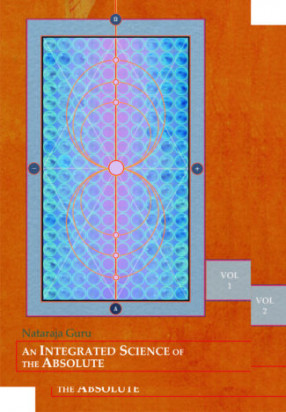
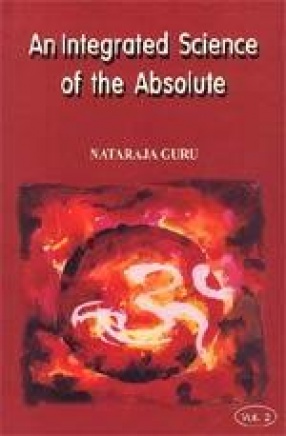
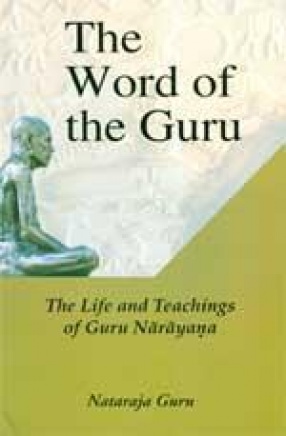

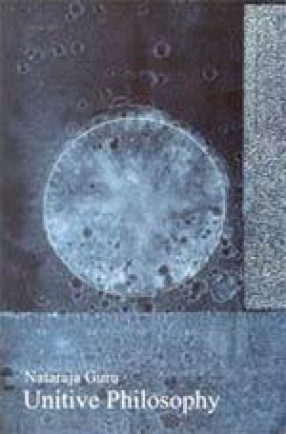


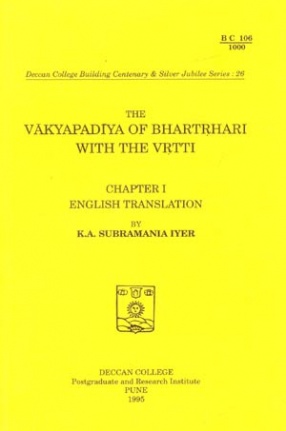
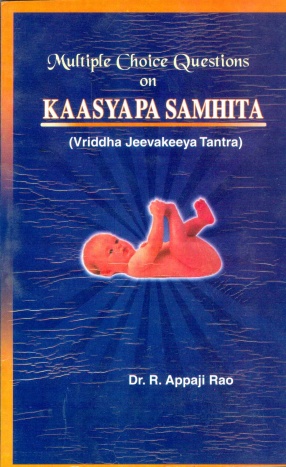

Bibliographic information